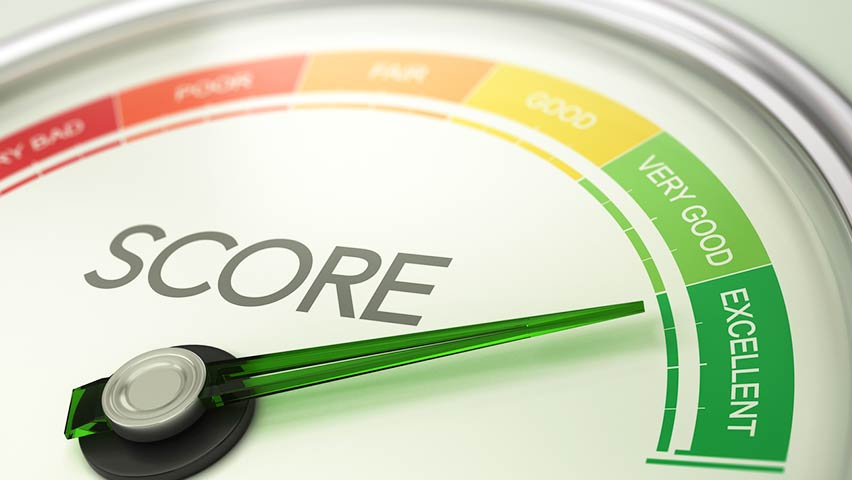How Long Does Credit Repair Take?
Good credit can open doors. You’ll have more (and less expensive) options if you need a loan, and it’ll be easier to qualify for the best credit cards. However, if you’ve missed payments or made mistakes in the past, your credit may need some attention.
It is possible to rebuild your credit history and boost your credit score, but how long it will take depends on where you start. Here’s what to expect when you’re working on credit repair (and how to get it done):
How Long Does It Take to Rebuild Credit?
Rebuilding your credit can take anywhere from days to years—it all depends on what’s hurting your credit. If you have high credit card balances, you may be able to quickly improve your score by paying down the debt. But derogatory marks like missed payments, accounts in collection, and bankruptcy can take several months or even years to fall off your credit report.
How Long Do Negative Marks Stay on Credit Reports?
Your credit scores are determined by analyzing the information in one of your credit reports from Experian, Equifax, or TransUnion.
These three major credit bureaus store and collect information on consumers and use it to create credit reports for creditors, such as banks, lenders, and credit card companies.
A federal law, the Fair Credit Reporting Act (FCRA) governs how long certain negative items can stay on your credit reports. Additionally, the bureaus’ policies lead to some negative items falling off your report before the legally allowed limit. Or, not appearing at all.
Based on the laws and policies, negative marks stay on your credit reports for:
| Derogatory Mark | Reported time: |
| Hard credit inquiry | 2 years |
| Late payment | 7 years |
| Collection account | 7.5 years |
| Chapter 10 bankruptcies | 7 years |
| Chapter 7 bankruptcies | 10 years |
The timeline for how long it takes for the derogatory mark to fall off usually depends on the date of first delinquency (the day your account first went past due). Or, in the case of bankruptcies, the filing date.
Collection accounts may stand out as they can stay on your credit report for seven years plus 180 days from the date of first delinquency. However, creditors may send your account to collections 180 days after you miss a payment. As a result, the collection account may fall off seven years after it appears.
You may also notice we didn’t list civil judgments or liens, two negative items that used to appear on credit reports. As of 2018, the major credit bureaus decided to no longer include this information in consumer credit reports (creditors can still get these records from other, specialty credit bureaus).
How Long Does It Take to Go From Bad Credit to Good Credit?
Your credit scores depend solely on the information in your credit report, so adding positive information or removing negative information can lead to score changes. Additionally, the impact of derogatory marks decreases over time.
For example, a hard inquiry may have a small negative impact on your credit scores at first. But, assuming no new negative information gets added to your report, you may see your scores increase within a few months. FICO credit scores don’t even consider hard inquiries that are over 12 months old.
More serious derogatory marks, such as a late payment, can impact your scores for longer, and it may take months or years to recover—particularly if you missed several payments in a row or fell behind on multiple accounts.
Two Ways to Quickly Boost Your Credit Repair Efforts
You don’t have to sit back and wait for your credit to recover. While time can heal financial mistakes, there are also active steps you can take to help your credit along. Here are two options that may be able to quickly improve your credit in 30 days or less:
Lower Your Utilization Rate
Second to your payment history, your current credit usage is one of the most important credit scoring factors. Your utilization rate—the portion of your available credit limits you’re currently using—plays a large role in this factor, and a lower utilization rate is better for your scores.
Paying off your credit cards can quickly lower your utilization rate, making it a great option for credit repair, but it isn’t always financially feasible. An alternative is to consolidate credit card debt with a personal loan. The credit score utilization calculation only considers revolving accounts, so moving the debt to a personal loan (a type of installment account) can lower your utilization rate even if you have the same amount of debt overall.
Once the credit card company reports your new, low balance to the credit bureaus, your low utilization rate could boost your credit scores.
Dispute Inaccurate Derogatory Marks
You can also carefully review your credit reports to see if there are any mistakes. Sometimes, these could be signs of fraud, such as an account you never opened appearing on your credit report with late payments. In this case, you should contact the creditor to report the fraud, close the account, and ask it to update the credit bureaus so they’ll remove the account from your credit reports.
Other mistakes may be more detail-oriented, such as the same account showing late payments in different months on each of your three credit reports. If you can’t remember whether you paid on time or not, you could ask the credit bureaus to verify the information.
If a credit bureau can’t verify information in your credit report, it has to update your credit report and delete the unverifiable negative marks. Getting negative marks corrected or removed—a process sometimes called credit repair—could instantly improve your credit scores. However, accurate negative information can stay on your credit reports for up to 10 years.
Focus on the Long-Term and Build Positive Credit
While there are a few steps you can take that may help you quickly recover from past mistakes, you’ll also want to focus on health credit management going forward. Making a habit of paying your bills on time is the most important part of achieving excellent credit scores. Keeping your debt levels low and only using a small portion of your available credit limits can also help you keep good credit scores.
If you don’t have any credit accounts, you may need to start with a secured credit card or credit builder loan. These two types of secured accounts are created for people who are new to credit or focusing on credit repair. By opening the accounts and paying your monthly bills on time, you can show creditors that they can trust you to pay your bills on time.
Quicken has made the material on this blog available for informational purposes only. Use of this website constitutes agreement to our Terms of Use and Privacy Policy. Quicken does not offer advisory or brokerage services, does not recommend the purchase or sale of any particular securities or other investments, and does not offer tax advice. For any such advice, please consult a professional.



